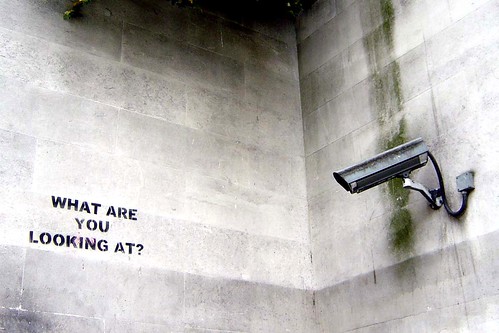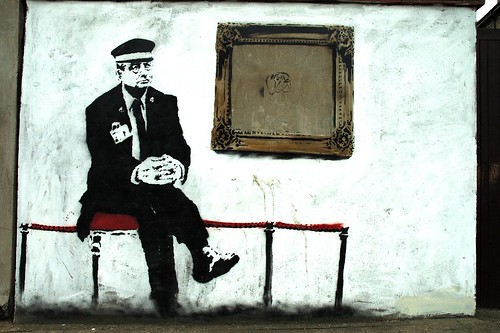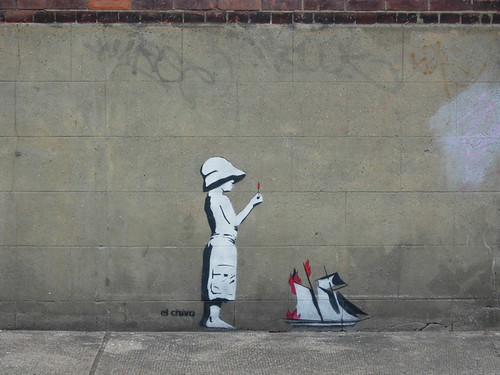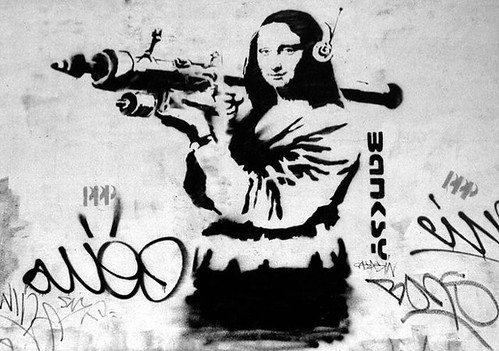Naturally I had heard of the saying â?? never judge a book by its cover but as most people know: this is exactly what we always do. When reaching the point when I could realistically design the cover for my own PhD thesis I set about the task with a large amount of enthusiasm. In part this comes from the desire to be creative and in part (I must confess) this comes from the joy of procrastination.
What I ideally wanted was a cover which said it all: a metaphor for the work, a eye-catcher, mysterious, unconventional, artsy, deep, filled with meaning, simple, elegant, awaking curiosity, striking etc etc and also with a little humour thrown in. In other words, like most people I wanted everything.
It is difficult to generalise about art but an example of my favourite book cover might sort of give an example of what I mean.
My own design efforts consist manly of what can be considered the Magpie approach. I steal and adapt. Usually this can be legitimised by the words of Pablo Picasso: â??Bad artists copy. Great artists stealâ??, the problem is – which am I? The result of my work was this:
It is part of a Russian film poster from a film called the Eleventh (1923) (original can be seen here) created by the Stenberg Brothers.
Then I realised that I should be using the technology I write about to see if I could be helped by others who know more than I about the art of book covers. So I issued a call for help which generated a lot of comments (both positive and negative). It also generated book covers which were presented here.
The covers generated more discussion. The majority picked nr 8. It was a landslide victory. However as has been pointed out to me â?? art is not a democratic process. So it comes down to the dilemma and anguish of choice. This was a terribly hard decision since the covers were all exiting.
More than this many of the submissions came with explanations and details which helped me realise the art behind the art work. This whole process of choosing a book cover â?? which could have been a simple process of choosing a background colour and adding the title of the book (this is not unusual for a PhD thesis) became a major learning experience. For your artistic efforts and for taking the time to educate me I thank you all.
The choice for my thesis is nr 8. It represents the interruption of communication. The vulnerability of relying on a technical infrastructure upon which we build society. The cartoon nature is a interesting form of â??false marketingâ?? since the contents of the book are really dry! Thank you all.
Nr 8.























 –
–




 Â
 
 Â
 





